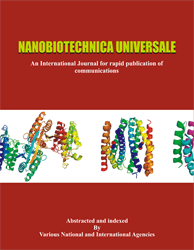Oroxylum indicum leaf extract effect as ingestion based method on larvicidal activity of Musca domestica
Gayatri K. Tingre1 , Ravindra V. Kshirsagar1 and Jiwan P. Sarwade2
1Department of Zoology in Modern College of Arts, Science and Commerce, Autonomous, Ganeshkhind, Pune - 411016, Maharashtra India, Savitribai Phule Pune University, Ganeshkhind Road, Pune- 411007 2Department of Zoology in Indapur Taluka Shikshan Prasarak Mandal’s, Arts Science and Commerce College, Indapur, Pune – 413106 Maharashtra Corresponding author’s Email address : gayatritingre22@gmail.com
ABSTRACT
Musca domestica L. Diptera: Muscidae, is a common insect pest capable of transferring numerous pathogens. The current study evaluated the larvicidal activity of Oroxylum indicum leaf extracts against Musca domestica using ingestion-based method. Leaf extracts were prepared using five solvents: hexane, chloroform, ethyl acetate, ethanol, and acetone. The larvicidal assay was conducted on second-instar larvae under controlled laboratory conditions. Mortality, pupal emergence, and adult emergence were recorded at 24 and 48 hours post-treatment. Among the extracts, the ethanol extract showed the highest larvicidal activity at 24 hours and 48 hours post treatment. In contrast, ethyl acetate extract exhibited the lowest larvicidal effect at 24 hours and 48 hours post treatment. Hexane, chloroform, and acetone extracts demonstrated moderate larvicidal activity. Larvae treated with hexane, chloroform, ethanol, and acetone extracts failed to develop into the pupal stage, whereas ethyl acetate-treated larvae showed a pupal emergence rate of 20%. No adult emergence was observed in any of the solvent extract treatments. These findings suggest that Oroxylum indicum leaf extract, particularly in ethanol, has significant potential for the management of M. domestica larvae using ingestion-based method and could be explored as a natural larvicide in integrated pest management programs.
